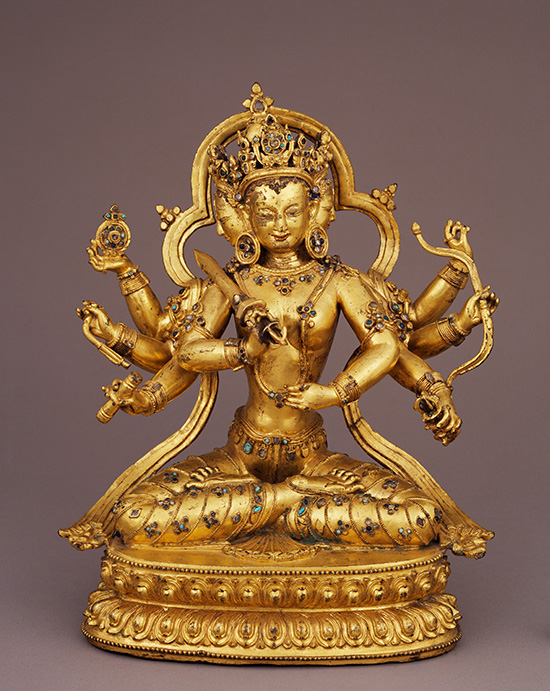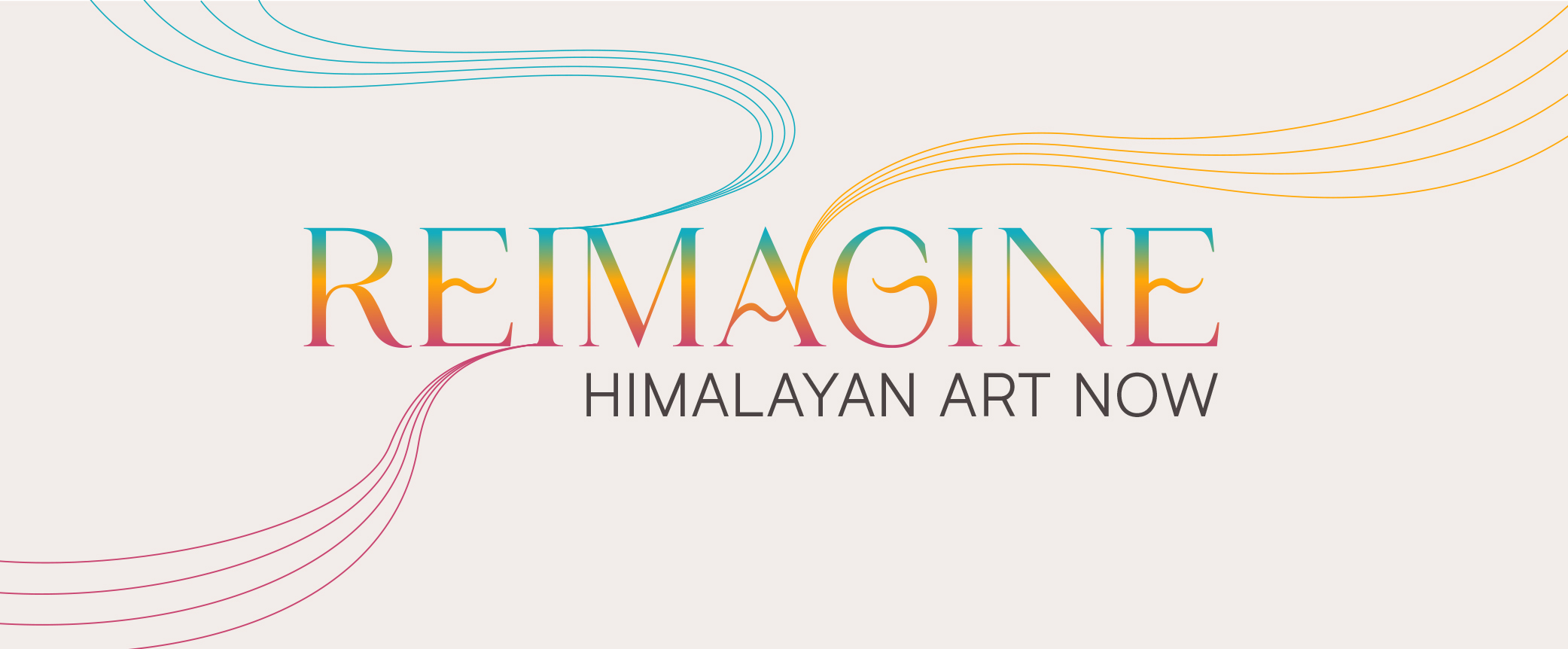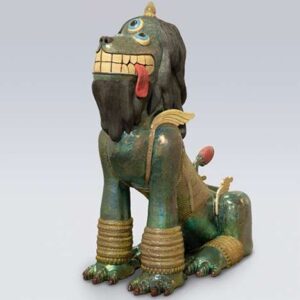
Tsherin Sherpa
Reimagine: Himalayan Art Now
March 15–October 6, 2024

LISTEN TO THE ARTIST
ABOUT THE ARTIST
Tsherin Sherpa (he/him)
b. 1968, Kathmandu, Nepal; lives in San Francisco, CA, and Kathmandu, Nepal; works in Kathmandu, Nepal
Born in 1968 in Kathmandu, Nepal, Tsherin Sherpa studied traditional Tibetan thangka painting with his father, Master Urgen Dorje, as well as Buddhist philosophy under various Buddhist masters. After moving to California at age 30, he began to explore his own style—reimagining the tantric motifs, symbols, colors, and gestures he learned from his father, establishing his own artistic expression. His contemporary compositions explore the hybridization of cultures, contemplating the collisions of culture and identity negotiated by displaced people.
While his perspectives remain rooted in his Tibetan identity, Tsherin Sherpa challenges the formal strictures of his artistic training by abstracting, fragmenting, and reconstructing traditional imagery to investigate his personal diasporic experiences and the dichotomy between the sacred and the profane. The artist believes the survival of a tradition like Tibetan Buddhism is predicated on contemporary adaptation, which artists like him can facilitate. He therefore prefers the forms themselves remain open to meaning, fluidity, and evolution, depending on what each viewer projects onto them.
ABOUT THE ARTWORK IN REIMAGINE

Originally conceived as a painting, Muted Expressions was Tsherin Sherpa’s response to the devastating 2015 earthquakes in Nepal. Disembodied human hands and feet cluster together and appear as a single entity, evoking the unfortunate ones trapped under collapsed structures, with only their extremities visible. Here the gestures are mudras, symbolic or ritual hand poses in Hinduism or Buddhism. In this sculpture not only do they represent various Buddhist concepts such as compassion, argument, prayer, and witnessing, but also slight variations and contemporary gestures such as the “peace” and “rock on” signs.
Snake coils bind the limbs together in a confused mess reflecting the interconnectedness of the religious and the secular, traditional and contemporary. Tsherin Sherpa’s elegant rendering of the hands and feet are reminiscent of the multiarmed Pratisara, one of the Five Protector Goddesses, most likely rendered by Nepalese craftsmen many centuries ago. One senses that these hands and feet might even be reaching out to a protector goddess like Pratisara to relieve them from suffering.
RELATED RUBIN OBJECT

This object from the Rubin Museum’s collection is presented in the Reimagine exhibition in dialogue with Muted Expressions, inviting new ways of encountering traditional Himalayan art.


